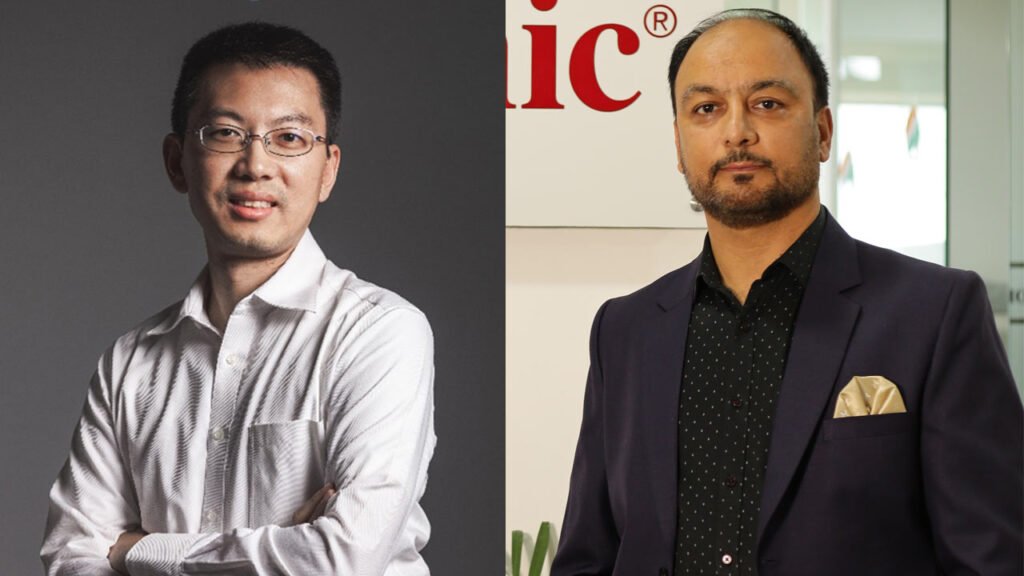As India’s appetite for digital transformation accelerates, global display solutions provider ViewSonic is sharpening its focus on the market. From classrooms adopting hybrid learning to enterprises seeking smarter collaboration, the brand sees India as both a challenge and an opportunity.
At InfoComm India 2025 in Mumbai, ViewSonic unveiled its next-generation Customizable All-in-One Direct View LED Display, the LDC027G-091C, powered by Chip-on-Board (COB) technology. Showcased under the theme “Solutions that Shape the Future,” the display demonstrated ultra-fine resolution, deeper contrast, improved durability, and up to 40% lower power consumption. Visitors also experienced real-world setups across meeting rooms, classrooms, retail spaces, and workstations, including a striking 160-inch 4K video wall powered by the new model.
On the sidelines of the showcase, we sat down with Muneer Ahmad, Vice President of AV Business at ViewSonic India, and Eric Wei, Asia Pacific General Manager at ViewSonic, to discuss the company’s strategy for India, the role of AI in their solutions, and how the future of display technology is unfolding.
Interview with ViewSonic Leadership: India, Innovation, and the Future of Displays
ex: ViewSonic is betting big on India. Beyond demographics, what convinces you that now is the right time to double down?
Muneer: The Indian market has always been important for us as a display company. While it has recently seen explosive growth, especially in LED, it’s still at a relatively early stage. We expect this growth to multiply in the coming years. With strong demand, product quality, and an aggressive strategy, we see a huge opportunity to capture more market share and consumer interest.
ex: Many Indian schools and offices face infrastructure gaps. How does ViewSonic adapt its premium tech to such realities?
Muneer: You’re right—there’s a clear gap. Not all schools can afford premium solutions. That’s why we segment our offerings into multiple series. Higher-end models serve premium institutions, while affordable solutions like our projectors are designed for budget-conscious schools. With hybrid learning now common, screens have become a necessity, and our combination of hardware and software helps us cater to institutions across the spectrum.
ex: AI is entering classrooms and workplaces. Do you see AI-driven collaboration tools being integrated into your displays?
Eric: Absolutely. In education, our AI features already help teachers generate digital content, saving preparation time and aligning with CBSE curricula. In offices, we’re developing AI tools to support transcription, translation, and meeting efficiency. Our education AI is already available, while B2B commercial AI solutions are in development.
ex: Beyond lamp-free projectors, how do you balance sustainability and affordability in India?
Eric: We were among the first to promote lamp-free projectors—first LED, now laser—eliminating mercury and cutting power use. Today, over 50% of our projectors in Asia are lamp-free, and that share will continue to grow. Beyond projectors, we follow strict environmental guidelines in production, use eco-friendly materials, and design products with up to 30% lower power consumption than competitors.
ex: Who do you see as your main competitors in India, and how do you differentiate?
Muneer: In projectors, brands like BenQ, Epson, and Optoma are strong competitors. Our differentiation lies in technologies like SuperColor, which delivers more vibrant visuals, lower product failure rates, and competitive pricing.
ex: What’s the next big thing in visual solutions?
Muneer: Technology evolves quickly, but AR/VR displays and holographic collaborations could be the next frontier. Concepts once limited to movies, like the metaverse, may soon shape real-world display solutions.
With nearly two decades in ICT, what’s the most surprising change in user behaviour?
Eric: The acceleration of digital adoption after COVID-19 stands out. Previously, many markets—including India—were slower to move away from paper-based systems. Post-pandemic, digital transformation accelerated dramatically, boosting demand for displays of all sizes, from 10-inch personal panels to 700-inch LED walls. This shift has reshaped our strategy to serve both individuals and enterprises with diverse display technologies.
ex: Why hasn’t ViewSonic made a bigger mark in gaming?
Eric: Gaming is part of our portfolio—we offer gaming monitors—but it isn’t our main focus. Gaming requires a broader ecosystem, especially computing power, which isn’t our domain. Our primary strengths remain in education, B2B, and professional display solutions, though gaming continues to be a sector we serve selectively.


